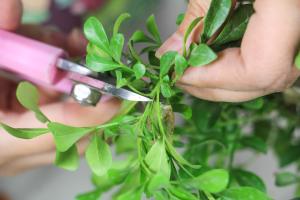The Importance of Planting Trees Close to Roads in Baltimore County
Planting trees close to roads in Baltimore County can have a tremendous positive impact on the environment, the community, and the overall quality of life. In this article, we will explore why planting trees close to roads is essential and the benefits it offers.
Benefits of Planting Trees Close to Roads
Planting trees close to roads offers numerous benefits, including:
Reducing Air Pollution: Trees absorb carbon dioxide, ozone, and other air pollutants through their leaves, helping to clean the air we breathe. They also produce oxygen, which improves air quality.
Reducing Noise Pollution: Trees act as natural sound barriers, reducing the noise levels coming from nearby roads.
Improving Water Quality: Trees absorb and filter stormwater runoff, preventing pollutants from entering water sources.
Providing Shade: Trees provide shade, reducing the need for air conditioning during the hot summer months and lowering energy bills.
Enhancing Aesthetics: Trees add beauty and aesthetic appeal to communities, making them more enjoyable places to live, work, and visit.
Challenges of Planting Trees Close to Roads
While there are many benefits to planting trees close to roads, there are also challenges that need to be addressed. One of the main challenges is:
Ensuring Safety: Trees planted too close to roads can impede drivers' visibility, making it difficult to navigate roads and increasing the risk of accidents. Tree limbs and branches can also fall onto roads, causing hazards for drivers.
Best Practices for Planting Trees Close to Roads
To ensure safety and maximize the benefits of planting trees close to roads, it's essential to follow best practices. Some of the best practices include:
Choosing the Right Trees: Select trees that have smaller mature sizes, limited limb droppage, and that are disease resistant. These trees are less likely to cause safety hazards and require less maintenance.
Proper Placement: Trees should be planted a safe distance away from the road, allowing for proper visibility for drivers. The placement of trees should also take into account overhead utility lines and underground utilities.
Maintenance: Trees planted close to roads should be regularly pruned to prevent overgrowth, which can obstruct drivers' visibility, and to prevent broken limbs from falling onto the road. Regular maintenance also ensures trees remain healthy, reducing the risk of disease and death.
Conclusion
Planting trees close to roads is an effective way to improve our environment and communities' overall quality of life. While there are challenges associated with planting trees close to roads, following best practices can minimize safety concerns and maximize benefits. As we continue to work towards a greener, more sustainable future, planting trees close to roads is a simple yet powerful step we can take.

 how many times do yo...
how many times do yo... how many planted tre...
how many planted tre... how many pine trees ...
how many pine trees ... how many pecan trees...
how many pecan trees... how many plants comp...
how many plants comp... how many plants can ...
how many plants can ... how many plants and ...
how many plants and ... how many pepper plan...
how many pepper plan...

































